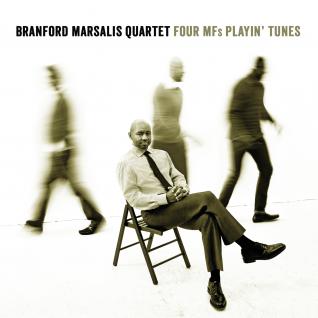 |
| Auld, Goodman, Williams, Christian (Photographer unknown) |
As everything else, social networking is as good as its end result. For me and whoever is reading this, it will allow us listening to 22 minutes from a radio programme recorded on February 19, 1941, at WNYC, where the announcer, Ralph Berton, requests tunes to Benny Goodman and his Sextet. Although there is a CD (Benny Goodman: A Tour de Force / The Small Groups, Live, Encore 7001) including two tracks from this broadcast ("Sheik of Araby", and "Gone with 'What' Wind"), the rest was unissued, so much so that some of it doesn't even appear on Leo Valdés's discography. The impromptu "Blues in Bb" may be the most interesting bit.
The programme can be listened to here, and the playlist is as follows:
00:00 Rose Room (ending)
00:52 Flying Home
05:49 Blues in Bb
10:42 The Sheik of Araby
13:13 Body and Soul (George Auld + rhythm)
17:38 Gone with "What" Wind
20:40 Stompin' at the Savoy
Personnel is Goodman on clarinet, Christian on guitar, Cootie Williams on trumpet, George Auld on tenor sax, Johnny Guarnieri on piano, Artie Bernstein on bass, and Dave Tough on drums. Eternal thanks to Loren Schoenberg for the heads up.
00:00 Rose Room (ending)
00:52 Flying Home
05:49 Blues in Bb
10:42 The Sheik of Araby
13:13 Body and Soul (George Auld + rhythm)
17:38 Gone with "What" Wind
20:40 Stompin' at the Savoy
Personnel is Goodman on clarinet, Christian on guitar, Cootie Williams on trumpet, George Auld on tenor sax, Johnny Guarnieri on piano, Artie Bernstein on bass, and Dave Tough on drums. Eternal thanks to Loren Schoenberg for the heads up.





















